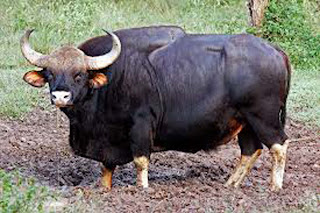Worldwide examination reveals new insight into current species decays, past species eliminations, and disturbances to Earth's biological systems
One million years prior, the elimination of huge bodied plant-eaters changed the direction of life on Earth.

The vanishing of these huge herbivores reshaped vegetation, adjusted fire systems over Earth's scenes, and changed biogeochemical cycling so that Earth's atmosphere turned out to be somewhat colder. Another examination out today by Utah State University Assistant Professor of Watershed Sciences, Trisha Atwood, recommends that present day megaherbivores (plant-eaters gauging in excess of 1000 kg) could before long endure a similar destiny as their antiquated predecessors, with obscure ramifications for Earth and the entirety of its occupants.
Outfitted with a dataset of the weight control plans of more than 24,500 warm blooded animals, winged creatures, and reptiles, Atwood and her group set out to respond to the inquiry "Are plant-eaters, meat-eaters, or creatures who eat the two plants and meat, at the most serious danger of termination?" Their discoveries, distributed in the diary Science Advances, would challenge a two-decade-long discernment that meat-eating predators were the most probable gathering to meet the wrath of Earth's six mass eradication.

The outcomes show that with over a fourth of the world's current herbivores undermined with annihilation, plant eaters have the most elevated portrayal of in danger species in the current day. The examination likewise features that this assault on herbivores is definitely not another wonder. Human exercises have prompted the lopsided termination of herbivores contrasted with predators since in any event the late Pleistocene (11,000-50,000 years prior).
"The outcomes were to some degree stunning," said Atwood. "Our exceptionally advertised and laden relationship with ruthless creatures, for example, lions and wolves has prompted the unwarranted recognition that we are losing predators more than some other trophic gathering."
Utilizing proof based science to challenge misguided judgments like the one Atwood's group revealed is basic for getting society in good shape towards tending to future eradications. Since an animal groups' job in its biological system is complicatedly connected to what it eats, understanding whether predators, herbivores, or omnivores are at the most noteworthy danger of annihilation enables researchers and society to comprehend what the likely outcomes of losing those species are.
As of now the results of decreases in present day herbivores from land-use change and chasing have started to repeat those that happened on Earth 1 million years back; modifications to vegetation, changes to fire systems, and disturbances to supplement cycling. This examination features that we should try harder to deliberately put resources into protection and the board of herbivores to stay away from future sensational changes in the capacities emerging from creatures at the base of worldwide foodwebs.
In spite of the fact that the aftereffects of the investigation show that herbivores are the most in danger gathering, it isn't no problems for predators. The examination likewise distinguished scroungers, which eat the remaining parts of as of late perished creatures (e.g., vultures) and creatures that basically eat fish, for example, seabirds, as having an increased danger of annihilation.
"Our outcomes empower us to distinguish particular eating regimens inside the carnivores that are related with higher annihilation hazard, and furthermore recognize the natural surroundings these species live in," says Edd Hammill an Assistant Professor of Watershed Sciences at Utah State University and co-creator of the investigation. "No doubt seabirds over the globe endure lopsidedly significant levels of eradication"
To more readily illuminate protection activities, the scientists are presently wrestling to comprehend what it is about herbivores, foragers, and piscivores (creatures that devour fish) that make them more vulnerable to eradication contrasted with different creatures.
"Reporting an example in eradications is just the initial move towards controling the loss of species," says Atwood. "Our subsequent stage is to comprehend the complexities of why this example is happening; at exactly that point will we truly get an opportunity at halting these future eradications."
Story Source:
Materials gave by S.J. and Jessie E. Quinney College of Natural Resources, Utah State University.
Unique composed by Trisha Atwood.
Note: Content might be altered for style and length.
Know Igneous Rocks Classification
Visit Official Home Page





0 Comments